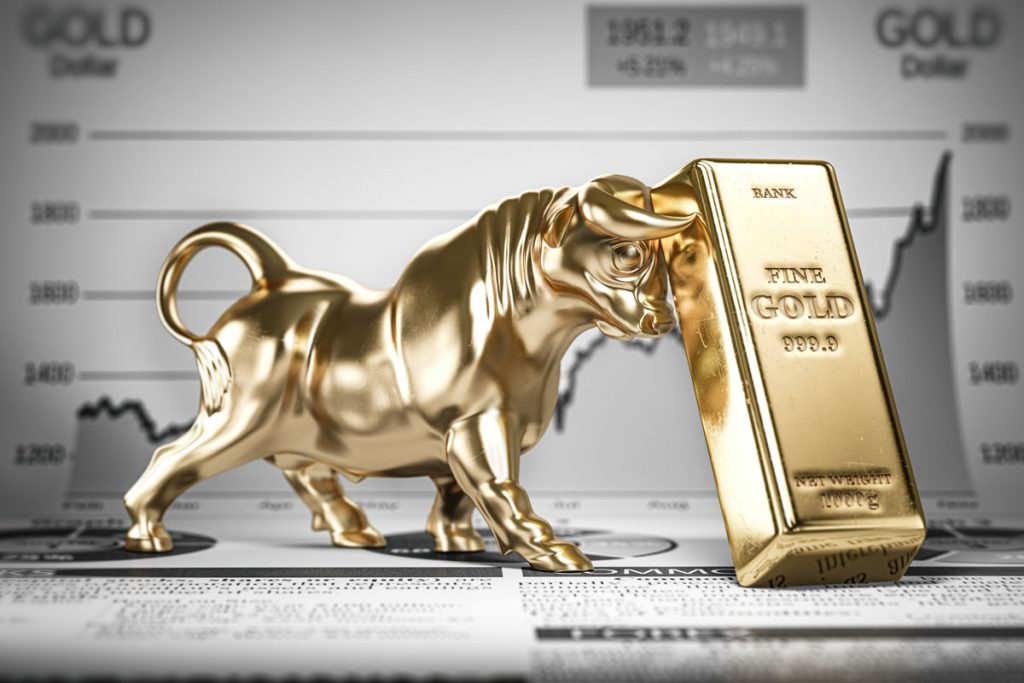Gold has long been regarded as a store of value, a hedge against economic uncertainty, and a reliable investment during times of financial turbulence. Throughout history, gold has played a vital role in protecting wealth, especially during financial crises and economic recessions. By examining gold’s performance during these pivotal times, investors can gain valuable insights into how gold behaves under pressure and how it can be used to navigate future market challenges.
In this article, we will explore insights from past gold price trends during financial crises, key takeaways from gold’s performance during economic recessions, practical investment tips based on historical patterns, and how past data can help investors predict future price movements. Understanding these historical lessons can help investors make informed decisions about their gold investments today and in the future.
Insights from Past Gold Price Trends During Financial Crises
Gold’s price tends to react to financial crises in a predictable manner, rising in value as investors seek refuge from financial instability. The pattern of gold’s performance during times of economic distress provides critical lessons for future investors.
The 2008 Financial Crisis: A Safe-Haven Rally
The global financial crisis of 2008 is one of the most significant financial disruptions in modern history. As the banking system teetered on the brink of collapse, stock markets plummeted, and the global economy entered a severe recession. In this environment, gold emerged as a safe-haven asset. Between 2008 and 2011, gold prices rose dramatically, from around $800 per ounce to over $1,900 per ounce.
The crisis triggered mass sell-offs in stocks, bonds, and other risk assets as investors fled to gold, which was seen as a stable store of value. The surge in demand for gold was further amplified by fears of inflation, as central banks worldwide initiated aggressive monetary stimulus programs, including quantitative easing, to stabilize their economies. This created an environment of uncertainty, where gold acted as a protective asset.
The COVID-19 Pandemic: A Surge in Demand for Safe Assets
The COVID-19 pandemic, which began in 2020, triggered a global economic shutdown. Stock markets around the world experienced extreme volatility, and central banks again resorted to aggressive monetary policies, slashing interest rates and injecting massive amounts of liquidity into the economy. Similar to the 2008 financial crisis, gold was seen as a refuge from market turmoil. In the first half of 2020, gold prices surged to an all-time high of over $2,000 per ounce.
As the pandemic caused widespread economic disruptions and uncertainties, gold’s role as a safe haven was reaffirmed. Investors flocked to gold in response to fears about inflation, currency devaluation, and the long-term economic impact of the pandemic. The surge in gold prices highlighted its resilience during times of crisis and its ability to maintain value when traditional assets are under pressure.
The 1970s: The Role of Gold During Inflation and the Oil Crisis
Another critical period for gold was the 1970s, when inflation rates in the United States soared due to oil price shocks and the collapse of the Bretton Woods system, which had pegged the dollar to gold. During this decade, gold prices experienced significant gains, rising from around $35 per ounce in 1971 to over $800 per ounce by 1980.
This surge was driven by the dual forces of rising inflation and economic instability. As the U.S. dollar lost its gold backing and inflation soared, gold became a popular hedge against the decreasing purchasing power of fiat currencies. The geopolitical instability caused by the oil embargo and the Vietnam War further fueled gold’s appeal as a safe asset.
Key Takeaways from Gold’s Performance During Economic Recessions
Gold has consistently proven itself to be a valuable asset during periods of economic downturn. By examining its performance during past recessions, investors can better understand the metal’s behavior in times of economic distress and how it can act as a hedge against financial risk.
Gold’s Resilience in the Face of Recessions
During economic recessions, when stock markets fall, businesses close, and unemployment rises, gold often performs well. This is because, in times of financial hardship, investors seek assets that are not tied to the performance of the stock market or the broader economy. Gold, as a tangible asset with intrinsic value, offers a refuge from the volatility of paper currencies and equities.
For example, during the early 2000s recession, which followed the burst of the dot-com bubble and the 9/11 attacks, gold prices began to rise steadily, reaching new highs in the wake of the 2008 financial crisis. Similarly, during the COVID-19 recession, gold’s value surged as central banks responded to the crisis with monetary easing, and concerns about inflation mounted.
Gold as a Hedge Against Inflation
Another important lesson from gold’s performance during past recessions is its ability to act as a hedge against inflation. In times of economic stress, particularly when central banks print more money to stimulate the economy, inflation can erode the purchasing power of fiat currencies. Gold, however, tends to retain its value over time and, in some cases, appreciates in response to rising inflation.
In the 1970s, as inflation rates surged due to the oil crisis and the end of the Bretton Woods system, gold prices skyrocketed as investors sought a way to protect their wealth. Similarly, in the post-2008 era, as central banks implemented policies like quantitative easing, gold prices increased as inflation expectations grew.

Practical Investment Tips Based on Historical Patterns
Investing in gold during times of crisis can be profitable, but there are important lessons to learn from history. Here are some practical tips for investors looking to capitalize on gold’s performance during economic downturns:
1. Buy Gold Early in a Crisis
History has shown that gold’s price tends to rise early in a financial crisis as investors flock to it for safety. Whether it’s a stock market crash, a banking crisis, or a geopolitical event, gold often sees an initial surge in demand. To capitalize on this, investors should consider purchasing gold early in a crisis, before prices increase significantly.
For example, during the 2008 financial crisis and the COVID-19 pandemic, gold’s price rose sharply within the first few months of the crisis. Investors who entered the market early were able to ride the wave of rising gold prices.
2. Diversify with Physical Gold and Gold ETFs
While physical gold (such as coins and bars) has traditionally been the preferred choice for many investors, gold exchange-traded funds (ETFs) provide a more liquid and accessible way to invest in gold. Gold ETFs allow investors to gain exposure to gold without having to worry about the physical storage or insurance costs associated with owning physical gold.
Both physical gold and gold ETFs can be important components of a diversified portfolio. During times of economic turmoil, owning gold can help balance the risk exposure in other asset classes, particularly equities and bonds.
3. Stay Informed About Economic Indicators
To make the most of your gold investments, it’s important to stay informed about key economic indicators that impact gold prices. This includes inflation rates, interest rates, geopolitical developments, and central bank policies. By tracking these factors, investors can anticipate potential gold price movements and adjust their investment strategies accordingly.
For example, if inflation is rising rapidly and central banks are cutting interest rates, gold may be poised to benefit. On the other hand, if interest rates are rising and the economy is stabilizing, gold prices may decrease as investors seek higher yields elsewhere.
How Past Data Can Help Investors Predict Future Price Movements
While history is not always a perfect predictor of the future, past data can provide valuable insights into how gold may behave in response to specific economic conditions. By studying previous financial crises and economic recessions, investors can gain a better understanding of the potential triggers for gold price movements.
The Importance of Historical Data in Predicting Price Trends
Looking at gold’s historical price movements during times of economic distress can help investors predict how it might perform in future crises. For instance, if inflation continues to rise or if geopolitical tensions escalate, gold may once again emerge as a safe-haven asset. Similarly, if central banks continue to print money, gold may be poised to appreciate in response to concerns about currency devaluation.
While no one can predict the future with certainty, historical patterns offer valuable clues about how gold is likely to perform in various economic scenarios. By analyzing past data and understanding the underlying causes of gold’s price movements, investors can make more informed decisions about when to buy and sell gold.
Conclusion
Gold has been a reliable store of value during times of financial crisis and economic recession, and its performance during past crises provides valuable lessons for investors. By understanding how gold behaves during economic downturns, geopolitical tensions, and inflationary periods, investors can make smarter decisions about how to incorporate gold into their portfolios.
History teaches us that gold is a resilient asset that can offer protection against financial turmoil. By investing strategically and staying informed about market trends, investors can take advantage of gold’s price movements and secure their wealth during times of uncertainty.
































